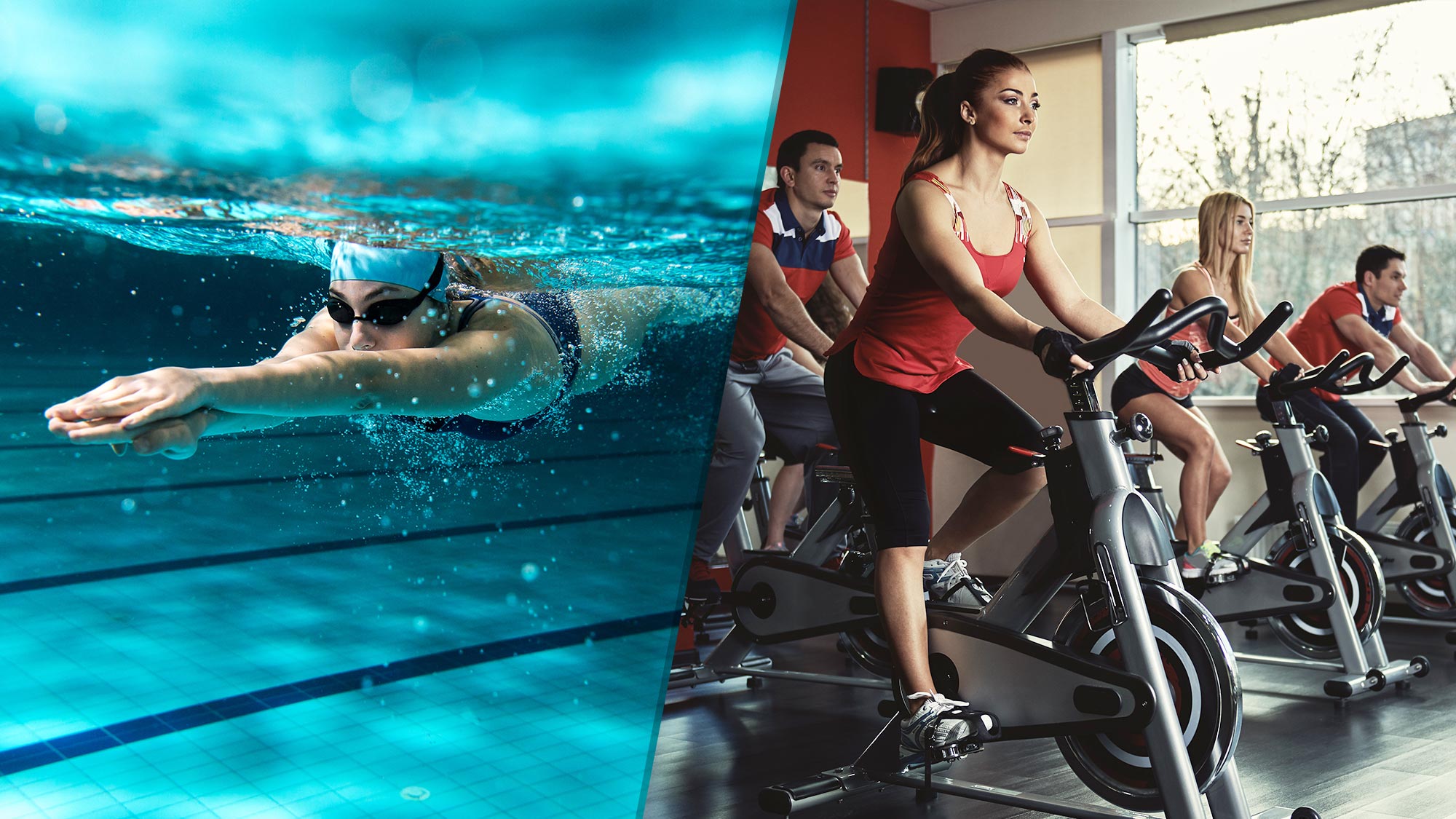When it comes to losing weight, you’ll find endless opinions on what the “best” workout is. Some folks swear by running. Others live on their yoga mat. But two exercises that constantly top the list — especially for low-impact, full-body results — are swimming and cycling.
They’re both popular. Both can burn serious calories. Both are kind to your joints. But if your main goal is weight loss, which one should you go for — the pool or the pedals? The answer isn’t a straight yes or no. It depends on your body, lifestyle, preferences, and how you approach each.
So let’s break it down: swimming vs cycling — which burns more calories, builds more muscle, and works best to help you drop fat and feel amazing?
Swimming for Weight Loss
Swimming is often described as the perfect workout — and it’s not just hype. Whether you’re doing freestyle laps or simply treading water, swimming is a full-body resistance workout wrapped in cardio.
Benefits of swimming:
- Full-body activation: Arms, legs, back, chest, and core all work together
- Low impact: Gentle on knees, hips, and back — ideal for all ages and fitness levels
- Burns calories fast: The water adds resistance to every move
- Improves posture and flexibility
- Great for mental health: Rhythmic strokes + calming water = serious stress relief
How many calories does swimming burn?
It depends on intensity and stroke. On average, a 70-kg person can burn:
- 500–700 calories/hour doing moderate freestyle
- 700–900+ calories/hour doing vigorous butterfly or laps
- Even treading water burns around 300–400 calories/hour
Swimming also boosts afterburn — you keep burning calories post-swim as your muscles recover from resistance-based work.
Cycling for Weight Loss
Whether you’re on a road bike, mountain trail, or indoor stationary bike, cycling is a powerhouse cardio option. It’s easy to scale, fun with music or a podcast, and burns fat effectively.
Benefits of cycling:
- Excellent cardio workout for the heart and lungs
- Strengthens legs: especially glutes, hamstrings, quads, and calves
- Easily adjustable intensity: flat rides or hill climbs
- Joint-friendly (especially when compared to running)
- Can be done indoors or outdoors, anytime, anywhere
How many calories does cycling burn?
Again, depends on intensity and terrain. On average:
- Moderate pace (12–14 mph): 400–600 calories/hour
- Vigorous cycling (16–20+ mph): 700–1000 calories/hour
- Spinning classes: often 500–800+ calories/hour
Cycling at higher resistance (uphill or on tough settings) also engages your core and arms a bit — especially if you ride standing.
Side-by-Side Comparison: Swimming vs Cycling
| Factor | Swimming | Cycling |
| Calorie Burn | High (500–900+ per hour) | High (400–1000+ per hour) |
| Muscle Engagement | Full-body (arms, legs, core) | Lower-body focused (legs, glutes) |
| Impact on Joints | Very low impact | Low impact |
| Accessibility | Needs a pool | Can be done anywhere |
| Learning Curve | Technique matters | Easy to start |
| Convenience | Limited by location/hours | Home/stationary options available |
| Mental Health Boost | High (calming, meditative) | High (rhythmic, outdoorsy) |
| Weight Loss Potential | Excellent, if done regularly | Excellent, scalable with time |
Which One Is More Effective for Fat Loss?
Truth is, both swimming and cycling can help you lose weight when paired with a good diet and consistent schedule.
But if we’re comparing head-to-head:
Choose swimming if:
- You want a full-body workout
- You’re looking to protect your joints (due to injury, arthritis, or age)
- You enjoy being in the water and want to build endurance + strength
- You’re okay with finding access to a pool regularly
Choose cycling if:
- You enjoy outdoor rides or prefer a home workout setup (with a spin bike)
- You want to focus on lower body toning
- You prefer to track progress easily (distance, speed, incline)
- You need a more convenient, flexible option
Can You Combine Both?
Absolutely. If you have access to both and want variety, mix them into your routine.
Example weekly schedule:
- Monday: Cycling (30–45 minutes steady pace)
- Tuesday: Rest or yoga
- Wednesday: Swimming laps (30 minutes)
- Thursday: HIIT cycling (intervals)
- Friday: Rest or light walk
- Saturday: Swimming + stretching
- Sunday: Long ride (1 hour)
This way, you avoid burnout, keep things fun, and challenge different muscle groups — which boosts overall fat loss.
Key Tips for Weight Loss Success
- Consistency matters more than the exercise.
Even 3–4 days a week of regular activity adds up fast. - Fuel wisely.
Both swimming and cycling will torch calories, but if you eat more than you burn, results slow down. Stick to whole foods, lean proteins, complex carbs, and healthy fats. - Track progress.
Use a fitness tracker or app to measure duration, distance, and calories burned. Seeing numbers go up builds motivation. - Prioritize recovery.
Both sports can be demanding. Stretch, hydrate, and get quality sleep. - Have fun.
Choose the one you’ll stick to. The “best” workout is the one you’ll do consistently with a smile (or at least without dread!).
Final Thoughts
So, is swimming better than cycling for weight loss?
The truth is — they’re both excellent. Swimming might slightly edge ahead in terms of calorie burn and full-body engagement, while cycling wins for accessibility and convenience.
If you’re just getting started, go with the one that feels enjoyable and realistic for your lifestyle. Whether you’re pedaling through the countryside or slicing through cool water, what matters most is that you keep moving.
Pick your path (or pool), stay consistent, and let the results speak for themselves. Weight loss is just one benefit — the real win is how much better you’ll feel inside and out.










